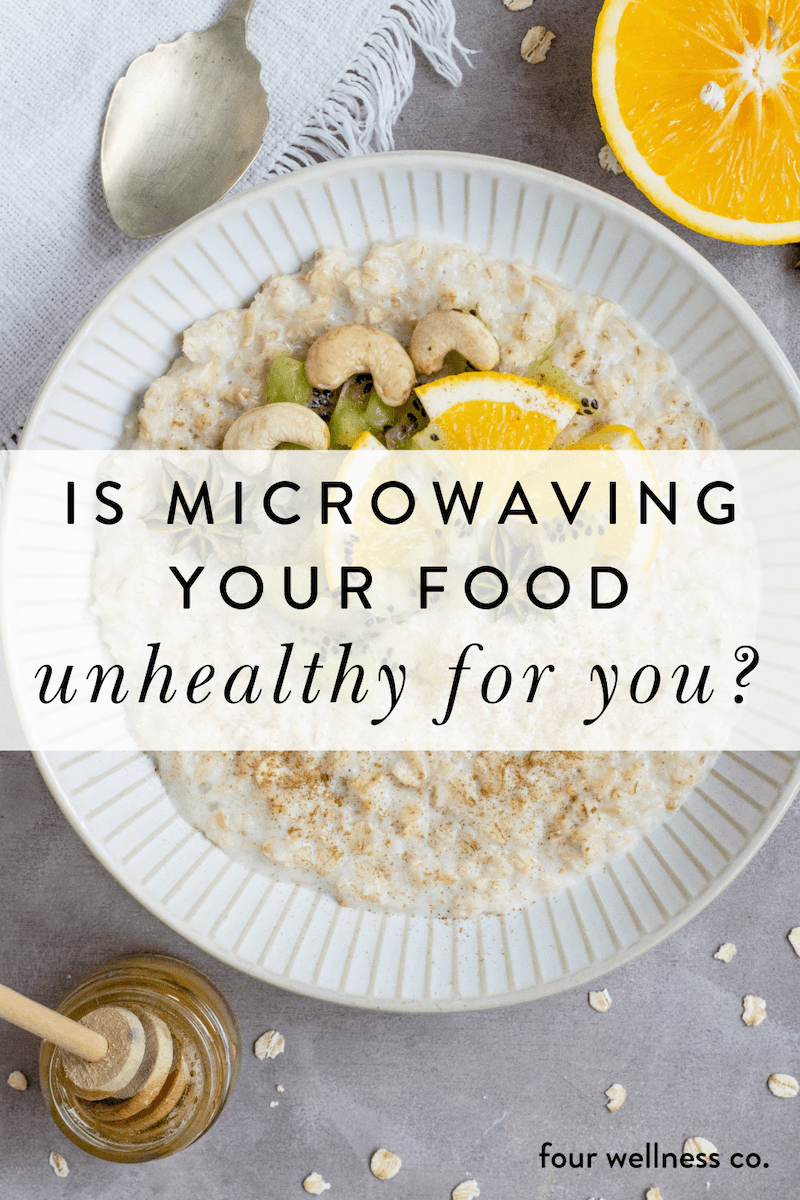Is Microwaving Your Food Unhealthy?
This post contains affiliate links, through which we may earn a small commission if you choose to purchase, at no additional cost to you. We only share products or services we personally use & recommend!
Is microwaving your food unhealthy?
Nahhh, not really.
But with some caveats:
What to know about microwaves and health
If you’re interested in eating a healthy, nutritious diet (or just general healthy living!), there are a few things to know and keep in mind about microwaves, and how they work to heat your food—and what that means for your health.
First, microwaves aren’t your best bet for healthful eating or quality cuisine, because they don’t typically involve fresh produce or other whole foods. (And, microwaveable-only packaged foods are, for the most part, not real food.)
But for reheating otherwise-healthy, whole food meals, the microwave is a lovely convenience and occasional use isn’t harmful—if you use it properly.
Microwave safety tips for your health
Here are our tips for practicing good microwave safety for your health:
Don’t microwave plastic.
(Or Styrofoam. Or metal, of course.) Even if a plastic container says “microwave safe,” that just means it won’t melt and burn you—but it likely contains harmful compounds that can leach into your food. Heating plastic releases endocrine-disrupting chemicals, which are linked to reproductive cancer, infertility, immune and neurological problems. Plastics and other synthetic materials (like styrofoam) are not ideal materials to heat up in the microwave.
The “no-microwaving-plastic” rule also applies to splatter covers and pre-packaged microwavable single-serving meals.
But what should I microwave my food in?!
Glass is your best bet!
Don’t overheat your food.
In general, the more you heat your food, the fewer nutrients remain. So, set the microwave timer for less time than you think you’ll need, and add additional time if needed. It’s best to only heat your food as much as necessary.
Don’t stand right next to the microwave while it’s cooking.
Microwaves can emit small amounts of radiation during use, which does the same thing to your cells as it does to your food—cooks them!
Microwave radiation diminishes quickly over distance, so standing a few feet farther away reduces exposure significantly.
Microwave-safe containers for a healthy kitchen
We share our favorite healthy kitchen products—including microwave-safe containers—in our Healthy Kitchen Guide, part of our Wellness Library of healthy living guides + resources.
Get our guide to creating a healthier kitchen:
Healthy eating tips: focus on real food & slow food
Though occasional microwave use to re-heat your healthy meals is nothing to get too concerned about, in general, healthy eating doesn’t need to involve the microwave too much. Here are some of our top healthy eating tips we share in health coaching:
Eat real food. The basis of a healthy diet is fresh, whole foods like vegetables, whole grains, and organic and responsibly raised animal products. (Here’s more on our simple principles for healthy eating.)
Avoid processed & packaged foods. Highly processed foods (aka most packaged foods in the center aisles of the grocery store) are more likely to contain harmful, synthetic ingredients, including GMOs (genetically modified organisms). They’re also more likely to be high in sugar and refined carbohydrates, which lead to chronic inflammation in the body.
Break out your slow cooker. In general, slower, lower-heat cooking methods (think: stew) preserve more nutrients than faster, high-heat methods (like grilling or frying).
Use your blender more than your microwave. Green smoothies are packed full of beneficial, nutrient-rich ingredients, and are quick and easy to make for a snack or breakfast (there are plenty of ways to add more oomph to a green smoothie to make it more filling!). Here are our favorite simple and healthy green smoothie recipes.
A salad a day keeps the doctor away. We could all stand to eat more leafy greens, and one of our top wellness tips is to eat one salad each day—whichever meal you’d like, with whichever toppings or dressing you’d like to add. Here are some of our favorite healthy homemade salad dressings.
FOUR WELLNESS TIP
Use your microwave sparingly, and be sure to practice good microwave safety when you do!












